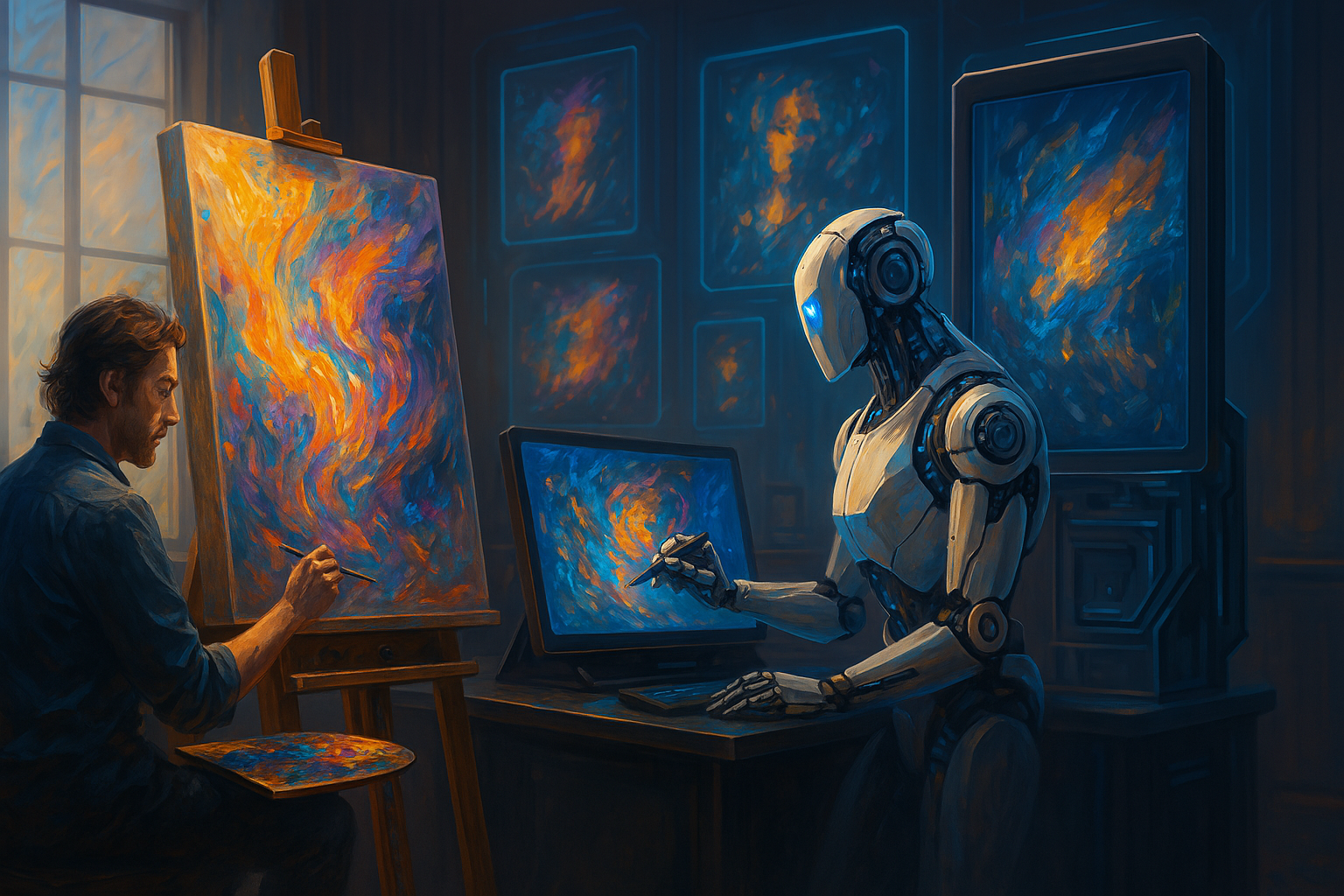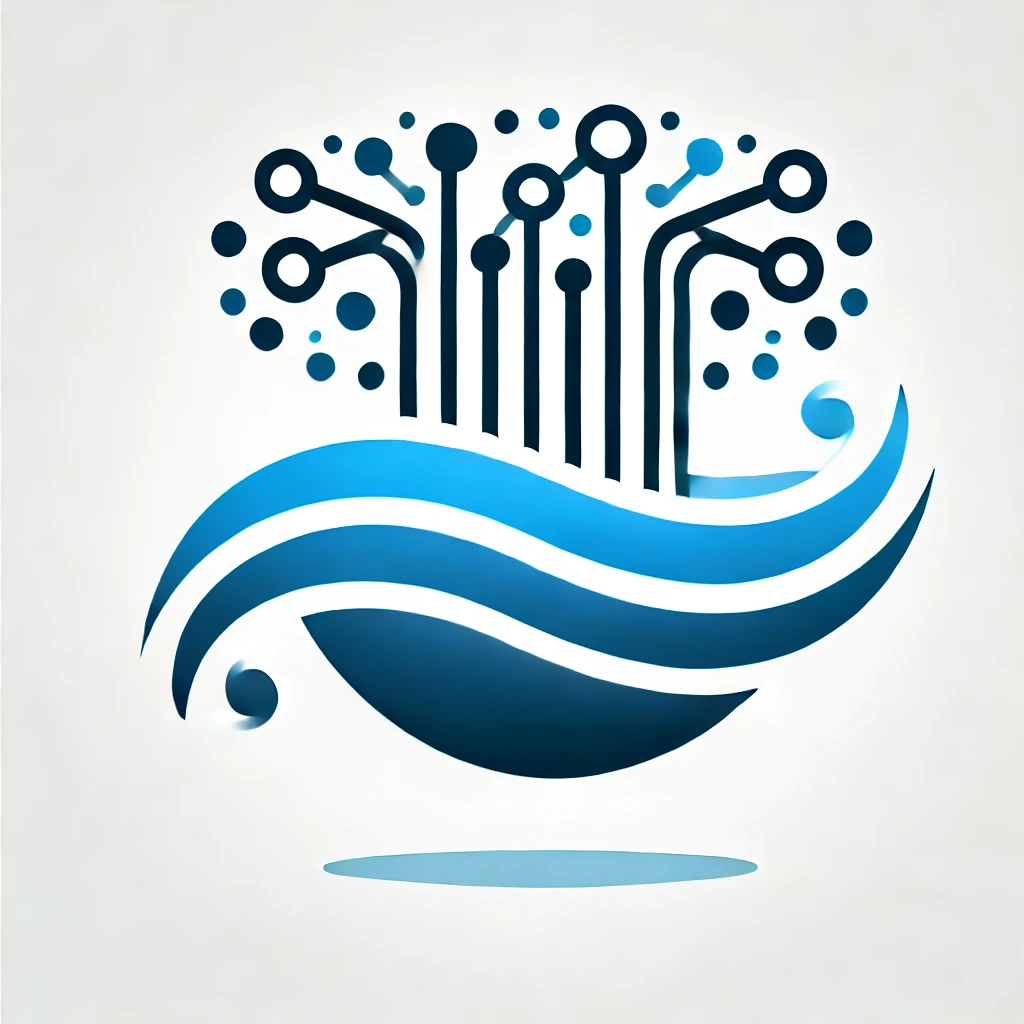AI and the Creative Coup: Can Machines Replace Artists?

In the serene halls of a prestigious Canadian art gallery, visitors pause before a striking abstract painting. Its composition is nuanced, its emotional resonance undeniable. Only after reading the small placard do they discover that no human hand created this work—it was generated by an artificial intelligence algorithm trained on thousands of human-made artworks. This scene, once purely hypothetical, is increasingly becoming reality across North America and beyond.
The New Renaissance: AI Enters the Creative Arena
Artificial intelligence has rapidly evolved from performing mundane computational tasks to generating sophisticated creative content that rivals human output. What began as experimental technology has quickly transformed industries where creativity was once considered an exclusively human domain. "We're witnessing a fundamental shift in how creative content is produced," says Dr. Maya Patel, AI Ethics researcher at the University of Toronto. "The barriers between human and machine creativity are becoming increasingly porous, raising profound questions about the nature of art itself." Tools like Midjourney, DALL-E, and more recently Sora have demonstrated capabilities that would have seemed impossible just five years ago. These systems can generate photorealistic images, compose music, write poetry, and even create short films based on text prompts. For businesses, this represents both opportunity and disruption.
The Business Case: Efficiency vs. Authenticity
For companies across North America, AI creativity tools offer compelling advantages. Marketing teams can generate unlimited visual assets without photographer fees. Content departments can produce blog posts, social media captions, and product descriptions at scale. Even video production—traditionally resource-intensive—is becoming accessible through AI generation. Michael Torres, CMO of Vancouver-based retailer NorthPeak, implemented AI creative tools across his marketing department in late 2023. "The ROI was immediate and significant," Torres explains. "We reduced our creative production costs by 63% while increasing our content output fourfold." However, this efficiency comes with important considerations. As consumers become more aware of AI-generated content, questions of authenticity emerge. A recent survey by the Canadian Marketing Association found that 58% of consumers expressed concern about whether content they encounter is AI-generated, with 42% stating they trust human-created content more.
From Imitation to Innovation: The Evolution of AI Creativity
Early AI creative systems were essentially sophisticated mimics, trained to recreate patterns observed in human work. But newer systems are beginning to demonstrate capabilities that blur the line between imitation and genuine creativity. "The latest models aren't just copying what they've seen—they're combining influences in unexpected ways and generating truly novel outputs," explains Dr. Alison Chen, who leads AI research at a major Silicon Valley tech company. "We're seeing these systems make creative leaps that surprise even their developers." This evolution raises profound questions about the nature of creativity itself. If a machine can produce work that moves, inspires, or provokes thought, does it matter that no human consciousness guided its creation?
The Human Response: Artists Fight Back
The creative community has responded to AI's incursion with a mix of adaptation, resistance, and legal action. In San Francisco, a collective of visual artists filed a landmark lawsuit against several AI companies for training their models on copyrighted works without permission or compensation. Similarly, the Writers Guild of America secured protections against AI replacement in their 2023 contract negotiations following a prolonged strike. "These technologies were built by scraping the internet for human creative work without consent," argues Sarah Mendelson, a Toronto-based illustrator who has been vocal in the movement for artists' rights. "Our creative labor is being used to train our replacements." The legal landscape remains unsettled. In 2024, a U.S. federal court ruled that AI-generated images could not be copyrighted, as they lack human authorship. However, Canadian copyright law is still developing precedents around these issues, creating uncertainty for businesses operating across the border.
Creative Collaboration: Humans and AI Together
Despite concerns, many creative professionals are finding ways to incorporate AI into their workflows rather than viewing it as competition. James Wilson, a Montreal-based graphic designer, describes his relationship with AI tools as collaborative: "I use AI to generate initial concepts or solve specific design problems, but the curation, refinement, and client communication remain distinctly human tasks." This collaborative approach is gaining traction across industries. Film studios use AI for background generation while human directors focus on storytelling. Music producers employ AI to create novel sounds while human composers provide emotional direction. Publishers use AI for research and drafting while human authors add nuance and voice. "The most successful implementations we've seen involve human-AI partnerships," notes Elizabeth Grant, digital transformation consultant for several Fortune 500 companies. "The technology augments human creativity rather than replacing it entirely."
The Ethics of Artificial Creativity
As AI creative tools become more sophisticated and widespread, ethical questions multiply. Issues of consent, attribution, and compensation remain largely unresolved. When an AI system trained on thousands of human works creates a new piece, who deserves credit? The developers? The artists whose work informed the model? The user who wrote the prompt? For businesses navigating this landscape, transparency is becoming increasingly important. Some forward-thinking companies now explicitly label AI-generated content, while others maintain human review of all AI outputs before publication. "Transparency about AI use builds trust with consumers," advises Marcus Johnson, CEO of Toronto-based digital agency Pixel8. "We've found that clients appreciate knowing which elements of their projects involved AI and which required human expertise."
Looking Forward: The Creative Landscape of Tomorrow
As we look to the future, several trends seem likely to shape the relationship between AI and creativity:
- Regulatory frameworks will evolve to address copyright, attribution, and compensation for training data.
- Technical watermarking and detection tools will become standard, allowing audiences to identify AI-generated content.
- Human-AI collaboration will become the norm rather than the exception, with creative professionals developing expertise in prompt engineering and AI direction.
- Premium markets for verified human-created content will emerge, similar to organic food or handcrafted goods movements.
- Educational institutions will adapt curricula to prepare creative professionals for a landscape where AI is a standard tool.
The Value Proposition of Human Creativity
Despite AI's impressive capabilities, many argue that human creativity retains unique value. "What makes art meaningful isn't just the end product but the human experience and intention behind it," suggests Dr. Robert Kim, professor of philosophy at McGill University. "When we engage with art, we're seeking connection with another human consciousness." This perspective suggests that human creativity may retain premium value even as AI becomes more capable. Already, some businesses are marketing "human-made" as a luxury proposition, emphasizing the craftsmanship, intention, and authenticity that human creators bring to their work.
Conclusion: Not Replacement, But Redefinition
As AI continues to reshape creative industries, the question may not be whether machines can replace artists, but how we define creativity itself in an age of technological collaboration. For North American businesses navigating this evolving landscape, success will likely depend on thoughtful integration of AI tools while respecting the unique value of human creative input. "We're not witnessing the end of human creativity," concludes Dr. Patel. "We're seeing its evolution into something new—a partnership between human imagination and machine capability that could potentially expand creative possibilities beyond what either could achieve alone." For executives, marketers, and creative professionals across the continent, the message is clear: AI creative tools represent not just a technological disruption but a fundamental shift in how we understand and value the creative process. Those who navigate this shift thoughtfully stand to benefit from both the efficiency of automation and the authentic connection that human creativity provides. The canvas of tomorrow will be painted by both human and artificial hands—and recognizing the distinctive brushstrokes of each will be essential for businesses seeking to connect with increasingly discerning audiences.
